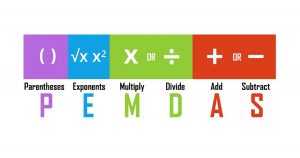An allusion is a short reference to a person, object, place, event, or other literary work the reader is likely to be familiar with. Allusion allows an author to pack a lot of meaning and importance into a phrase or a single word. On the other hand, Allusions are only successful if the reader understands and recognizes them. When an allusion is misinterpreted or unclear, it loses its potency because it confuses the reader. Here are some Allusion examples.
For example, in his work Ragtime, E.L. Doctorow’s character “Little Boy” instructs another character who is traveling to Europe to “warn the Duke.” This is a reference to Archduke Franz Ferdinand of Austria, whose assassination set the series of events that led to World War I. Doctorow’s Allusion is beneficial for readers who notice and comprehend the connection. It emphasizes the importance of how one deed in history may have long-term global ramifications for readers.
What is Allusion?
An allusion is a brief reference to an individual, position, thing, event, or other erudite work that the anthology is likely familiar with. Allusion is an erudite system that enables a pen to army a lot of significance and meaning into a single word or expression. But references only work if the anthology recognizes them, understands them, and rightly infers and interprets them. An allusion might lose its impact by confusing the anthology if it’s unclear or misinterpreted.
Allusion Examples
Here are some different types of allusion we’ll be covering with examples:
Common Allusions in Everyday Speech
People frequently make references in regular discourse, sometimes without realizing it and sometimes without understanding what they are alluding to. These allusions are usually to popular cultures, such as movies, music, novels, famous personalities, etc. Here are some instances of popular allusions in ordinary speech, along with the original material they allude to:
- To me, his grin is like kryptonite: Superman’s weakness
- She had the feeling she had a golden ticket: Charlie and the Chocolate Factory
- He’s young, scrappy, and eager: Hamilton
- I wish I could click my heels together: The Wizard of Oz
- My automobile could turn into a pumpkin if I don’t get home by midnight: Cinderella
- She has a Cheshire cat grin on her face: Alice in Wonderland
- His work is analogous to removing a sword from a stone: King Arthur’s Legend
- Is there an Einstein among your physics students? Albert Einstein
- He who shall not be named is my maths teacher: Voldemort from the Harry Potter series
- I’m trying to sound like Queen B: Beyonce
- Today may be the Ides of March: Shakespeare’s Julius Caesar
- It would be a good idea to sit on my thinking chair right now: Blue’s Clues
- I’m dressed like a caped crusader: Batman
Examples of Classical Mythology Allusions
Authors frequently use Allusion as a literary tactic to establish context for an accidental mention of something or a fleeting reference. Because most readers are familiar with ancient myths, their storylines, and characters, Roman and Greek mythology are frequently used as sources for references in literature, either indirectly or directly. Here are some examples of classical mythology allusions:
- Achilles’ heel (alluding to the one weakness of Achilles)
- Arrow of Love (Allusion to Cupid)
- Carrying the weight of the world on your shoulders (Allusion to Atlas)
- Pushing a boulder uphill every day (Allusion to Sisyphus)
- Hot as Hades (king of the underworld/alluding to the god of death)
- Looking like Venus (alluding to the goddess of beauty)
- Herculean effort (alluding to the strength of Hercules)
- Opening Pandora’s box (alluding to Pandora’s myth of letting trouble into the world)
- Protean form of management (alluding to Proteus who could change his shape)
- Can’t stop staring at himself (Allusion to Narcissus)
Famous Biblical Allusion Examples
Another commonly cited source for authors who use Allusion as a literary method is the Bible. Here are a few well-known examples of Biblical Allusion:
- Garden (Eden, creation)
- Snake (Satan, serpent)
- Flood (Noah’s Ark)
- Apple/fruit (temptation, tree of knowledge)
- Cross (Christ, crucifixion)
- Great patience (Job)
- Fraternal competition (Cain and Abel)
- Betrayal (Judas)
- Generosity/philanthropy (Good Samaritan)
- Slingshot/stone (David and Goliath)
Allusion Examples in Literature
In all kinds of writing, Allusion is a very powerful literary device. Authors can use allusions to create characters by linking them with other well-known and recognized archetypes or symbols. Literary allusions can also provide context for the reader by comparing or contrasting one work. Furthermore, by referring to the storyline and character of another work, Allusion can give exposition to a tale, allowing the reader to understand more about the story’s events or character motives.
When making allusions in a literary work, authors must strike a balance between what they choose to reference and how to weave it into their work to be clear and significant to the reader. Here are some examples of common allusions for an author to consider when employing this literary device:
- Self-reference–when an author refers to another author’s work
- Single connection–when an author uses Allusion to connect one work to another
- Causal reference–when a reference is made but is not necessary to the plot
- Corrective reference–when an author refers to another work that is opposed to their own
- Apparent reference–when an author alludes to a certain source but in an unusual manner
- Multiple references–when an author employs several references
As a literary device, Allusion is used to provide a context in academic work by referring to a well-known or recognizable person, location, event, or another piece of literature. Allusions aid in developing a link between an author’s invention and its identification with something else that the reader would recognize. This is useful for character development, contextualizing a tale, and building locations. The majority of literary references are not immediately explained to the reader but rely on the reader’s ability to infer.
Allusions Examples in Poetry
Illustration 1: The Bluest Eye (Toni Morrison)
Morrison references in her work the recognizable terminology of the Dick and Jane reading primer series, which was utilized in school curricula from the 1930s until the 1970s. The series used basic, repetitive verbiage and depicted a white, middle-class family consisting of a boy, girl, mother, father, dog, and cat living in a picturesque American neighborhood. In this section, Pecola’s character confronts the Dick and Jane series’ language, meaning, and aesthetic by running the words together and making them difficult to grasp for the novel’s reader.
This symbolizes Pecola’s mental breakdown and the discrepancy of pictures between her surroundings and experience as an African American girl in 1940 Ohio and the white youngsters in Dick and Jane’s world. Morrison’s literary trick of Allusion to Dick and Jane is powerful because readers widely recognized and understood it. It adds meaning to the meaninglessness Pecola sees in the primer’s words.
Illustration 2: Nothing Gold Can Stay (Robert Frost)
Frost alludes to the “fall of man” and exile from Paradise in his poem by referring to Eden and how it “sank to grief.” This reference connects the human experience to the poet’s sorrow about the natural cycle of life and death, beginning and ending. The connection to Eden also adds an interesting context to the poem. The reader can deduce that man’s fall was a natural and probably unavoidable occurrence, adding to the appreciation of life in its fleeting existence.
Illustration 3: As I Lay Dying (William Faulkner)
Faulkner’s work extensively emphasizes the reader’s capacity to detect and infer story components and character motivations. This is especially true for Addie Bundren’s character, who can only narrate one chapter before dying. In this section, Addie recalls her adulterous romance with Reverent Whitfield, which resulted in the birth of her son Jewel. In addition, this paragraph references Nathaniel Hawthorne’s novel The Scarlet Letter, in which Hester Prynne conceived a child as a result of her romance with Reverend Dimmesdale.
This metaphor by Faulkner serves to understand Addie’s character, her connection with Jewel, and her family’s fragmented structure. On the other hand, Faulkner depends on the reader to pick up on this brief connection to Hawthorne’s work, deduce its relevance and meaning, and apply it to his novel. If the reader misses or misinterprets Faulkner’s subtle Allusion, the Allusion is rendered ineffectual and meaningless.

Relevant Articles
Public vs Private Colleges – Which is better for you?
With approximately 4,300 colleges and universities in the United States, …
Public vs Private Colleges – Which is better for you? Read More »
Read More >>How to Use an Abacus for Basic Math Operations?
In this article, we’ll learn about how to use an …
How to Use an Abacus for Basic Math Operations? Read More »
Read More >>PEMDAS: What Does It Mean and Why Does It Matter?
In mathematics, the order of operations is important to solve …
PEMDAS: What Does It Mean and Why Does It Matter? Read More »
Read More >>



















Comments: